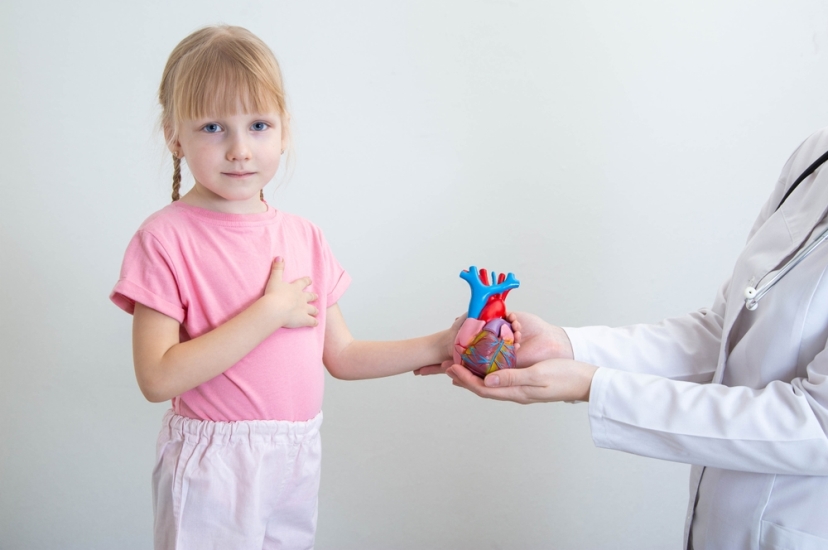Congenital heart disease can be treated without surgery
Heart disease treatment in Thailand has progressed significantly from before, and some types of congenital heart diseases can be treated without requiring open-heart surgery. A special device can be inserted intravenously into the heart in order to close leaks.
Congenital heart disease is divided into 2 types as follows:
- Cyanotic congenital heart disease, where deoxygenated blood is mixed with oxygenated blood.
- Non-cyanotic, where no deoxygenated blood is mixed with oxygenated blood.
The causes of congenital heart disease are…
1. The cause is unknown in about 90% of the cases.
2. Genetic or chromosomal abnormalities, such as Chromosome 21, which can cause Down syndrome along with congenital heart disease.
3. Infection by the mother during pregnancy, especially within the first trimester of pregnancy, for example, infection with rubella, etc.
4. Exposure by the mother to x-ray radiation in the first trimester of pregnancy.
5. The mother’s use of certain drugs like acne drugs, anti-seizure medications or amphetamines, etc.
6. Finally, it can be caused by mothers who become pregnant during older age such as when they are over 35 years old.
Heart diseases frequently encountered after childbirth are…
- Rheumatic heart disease.
- Myocarditis.
- Kawasaki disease.
- Heart disease caused by vitamin B1 deficiency (beriberi).
- Abnormal heartbeat.
**The cause for Kawasaki disease remains unclear, but the disease is more common today.
Symptoms Indicative of Congenital Heart Disease
1. The child becomes more easily tired than ordinary children during breastfeeding.
Children with congenital heart disease require more time to breastfeed and often have to stop intermittently while suckling and are able to drink less milk because a leak inside the heart causes more blood to travel to the lungs than normal, causing the heart and lungs to have to work harder than normal.
2. The child breathes more rapidly than normal.
Due to a leak in the walls of their heart, more blood passes through to the lungs, causing ineffective gas exchanges when compared to what is normal, leading the children to breathe abnormally fast.
3. Lack of growth.
Because children with congenital heart disease require more energy than normal, they have less energy to use in their development, leading them to grow slower than normal and for their bodies to develop slowly.
4. Children with congenital heart disease have a higher metabolic rate than ordinary children.
This can be observed from the children sweating more easily, becoming cold more easily and being paler than ordinary children.
5. The child’s heart beats faster and harder than normal.
If the mother palpates the chest or examines the chest, she will find that the child’s heart is beating hard and fast.
6. Cyanosis
In cyanotic congenital heart disease cases, the lips, ends of the hands and feet develop cyanosis.
Treatment of congenital heart disease can be divided according to disease severity.
1. Medication treatment such as by giving drugs to treat heart failure.
2. Intervention by use of a balloon or special device to close off leaks, etc.
3. Surgical treatment.
What non-surgical treatment approaches does the hospital use to treat heart surgery? Today, the non-surgical treatments that the hospital uses include treatment to close leaks of the PDA (patent ductus arteriosus) and closing of leaks caused by atrial septal defects (ASD). These treatments involve simple and safe options, especially treatments to close leaks at the PDA and ASD.
What are the steps involved in non-surgical treatment of congenital heart disease?
Treatment today does not require surgery. We use a device that appears similar to an umbrella to insert intravenously into the heart in order to close leaks. The treatment requires about 2 hours, and the children will not develop scars afterwards. If a child does not develop complications after treatment, the child can return home to recover immediately and go live a normal life.
Meanwhile, when children have to undergo surgery, they face some risks from the surgery and anesthesia, and close care and attention in the ICU are necessary after the operation. The children will have to stay for 1-2 days in the ICU, so treatment can be more expensive. Because today we can treat the condition by closing leaks at the PDA and ASD, this option is safer and less expensive.
How should parents care for children with congenital heart disease?
In caring for children after surgery to treat congenital heart disease, the children will be able to return to live a normal life like ordinary children and can exercise normally. Meanwhile, children who have not undergone surgery should be given support to facilitate their growth to allow them to be have the health and body that are ready for surgery. Most importantly, the children must not get infection, especially pneumonia. Their diet must consist of all 5 food groups, and they cannot engage in competitive sports. This is because children with congenital heart disease develop infection easily and are at greater risk of developing chronic diseases than ordinary children.
You may find our specialist at our Pediatric Center
Phyathai 2 Hospital
International Correspondence Center
Tel: +66-2617-2444 ext. 2020 or 2047 E mail: onestop@phyathai.com
 @pt2_inter
@pt2_inter
 Phyathai 2 Cambodia
Phyathai 2 Cambodia
 PT2Chinese
PT2Chinese
 phyathai2inter
phyathai2inter
